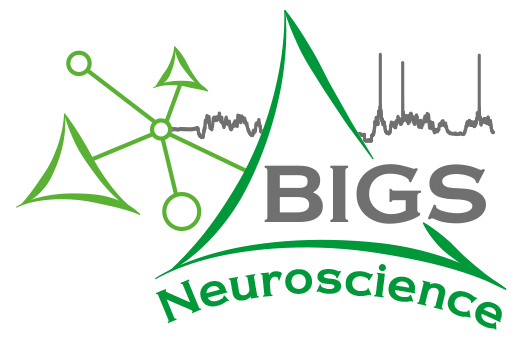Prof. Dr. Gunther Hartmann
Director
Institute of Clinical Chemistry and Pharmacology
Institute of Clinical Chemistry and Pharmacology
Phone: +49 (0) 228 287 16080
Email: gunther.hartmann(at)uni-bonn.de
Research Focus
Our research focuses mainly on the discrimination between „self“ and „non-self“ with special emphasis on the detection of foreign nucleic acids by receptors of the innate immune system. This includes nucleic acids derived from pathogens as well as those from damaged or transformed cells. The best-known nucleic acid sensors include RIG-I, TLRs and cGAS/STING.
RIG-I (retinoic acid-inducible gene I) is a cytosolic pattern recognition receptor (PRR) that recognizes viral RNA. Activation leads to the induction of an antiviral program in the infected cell that triggers the production of type I interferons. Our institute has already shown that the ligand for RIG-I is a short, double-stranded RNA molecule of at least 20 nucleotides length, a blunt-end conformation and with a triphosphate group at the 5′ end (3pRNA).1,2 This ligand has been shown to be very effective in preclinical studies on immunotherapy against cancer and protection against viral infections3-6. A RIG-I ligand developed at our institute is currently being tested in an international multicenter Phase II clinical trial on tumor immunotherapy.3-6 . The therapeutic application of RIG-I in combination with checkpoint inhibitors, chemotherapeutics or irradiation is further investigated preclinically at our institute.
Toll-like receptor (TLR) ligands consist of a broad spectrum of „foreign“ structures that only occur in or on microorganisms. For example, TLR3, TLR7, TLR8 and TLR9 are responsible for the immune recognition of pathogenic nucleic acids. Our current research focus is on viral RNA recognition by TLR7 and TLR8. With the increasing understanding of the functional consequences of TLR7 and TLR8 activation7-9, we are now increasingly interested in the development of specific and therapeutically applicable TLR7 and TLR8 ligands.
Another focus of our research is the key receptor for the recognition of cytosolic double-stranded DNA, the cyclic GMP-AMP synthase (cGAS). The subsequent generation of 2′-3′-cGAMP10 leads to the production of type I interferons via STING activation and thus alerts the immune system.11 Only recently, we were able to demonstrate with Martin Schlee’s group from our institute that Y-shaped, structured, single-stranded DNA, which occurs in the cDNA of certain retroviruses, can also serve as ligands for cGAS. 12
Our goal is to develop the clinical implications of the new findings in the field of nucleic acid immunity from basic research. Students of the institute also have the opportunity to participate in the graduate programs of the Excellence Cluster „ImmunoSensation“ and the Collaborative Research Center Transregio 237 „Nucleic Acid Immunity“, as well as in the Bonn & Melbourne Graduate Program (GRK 2168).
RIG-I (retinoic acid-inducible gene I) is a cytosolic pattern recognition receptor (PRR) that recognizes viral RNA. Activation leads to the induction of an antiviral program in the infected cell that triggers the production of type I interferons. Our institute has already shown that the ligand for RIG-I is a short, double-stranded RNA molecule of at least 20 nucleotides length, a blunt-end conformation and with a triphosphate group at the 5′ end (3pRNA).1,2 This ligand has been shown to be very effective in preclinical studies on immunotherapy against cancer and protection against viral infections3-6. A RIG-I ligand developed at our institute is currently being tested in an international multicenter Phase II clinical trial on tumor immunotherapy.3-6 . The therapeutic application of RIG-I in combination with checkpoint inhibitors, chemotherapeutics or irradiation is further investigated preclinically at our institute.
Toll-like receptor (TLR) ligands consist of a broad spectrum of „foreign“ structures that only occur in or on microorganisms. For example, TLR3, TLR7, TLR8 and TLR9 are responsible for the immune recognition of pathogenic nucleic acids. Our current research focus is on viral RNA recognition by TLR7 and TLR8. With the increasing understanding of the functional consequences of TLR7 and TLR8 activation7-9, we are now increasingly interested in the development of specific and therapeutically applicable TLR7 and TLR8 ligands.
Another focus of our research is the key receptor for the recognition of cytosolic double-stranded DNA, the cyclic GMP-AMP synthase (cGAS). The subsequent generation of 2′-3′-cGAMP10 leads to the production of type I interferons via STING activation and thus alerts the immune system.11 Only recently, we were able to demonstrate with Martin Schlee’s group from our institute that Y-shaped, structured, single-stranded DNA, which occurs in the cDNA of certain retroviruses, can also serve as ligands for cGAS. 12
Our goal is to develop the clinical implications of the new findings in the field of nucleic acid immunity from basic research. Students of the institute also have the opportunity to participate in the graduate programs of the Excellence Cluster „ImmunoSensation“ and the Collaborative Research Center Transregio 237 „Nucleic Acid Immunity“, as well as in the Bonn & Melbourne Graduate Program (GRK 2168).
